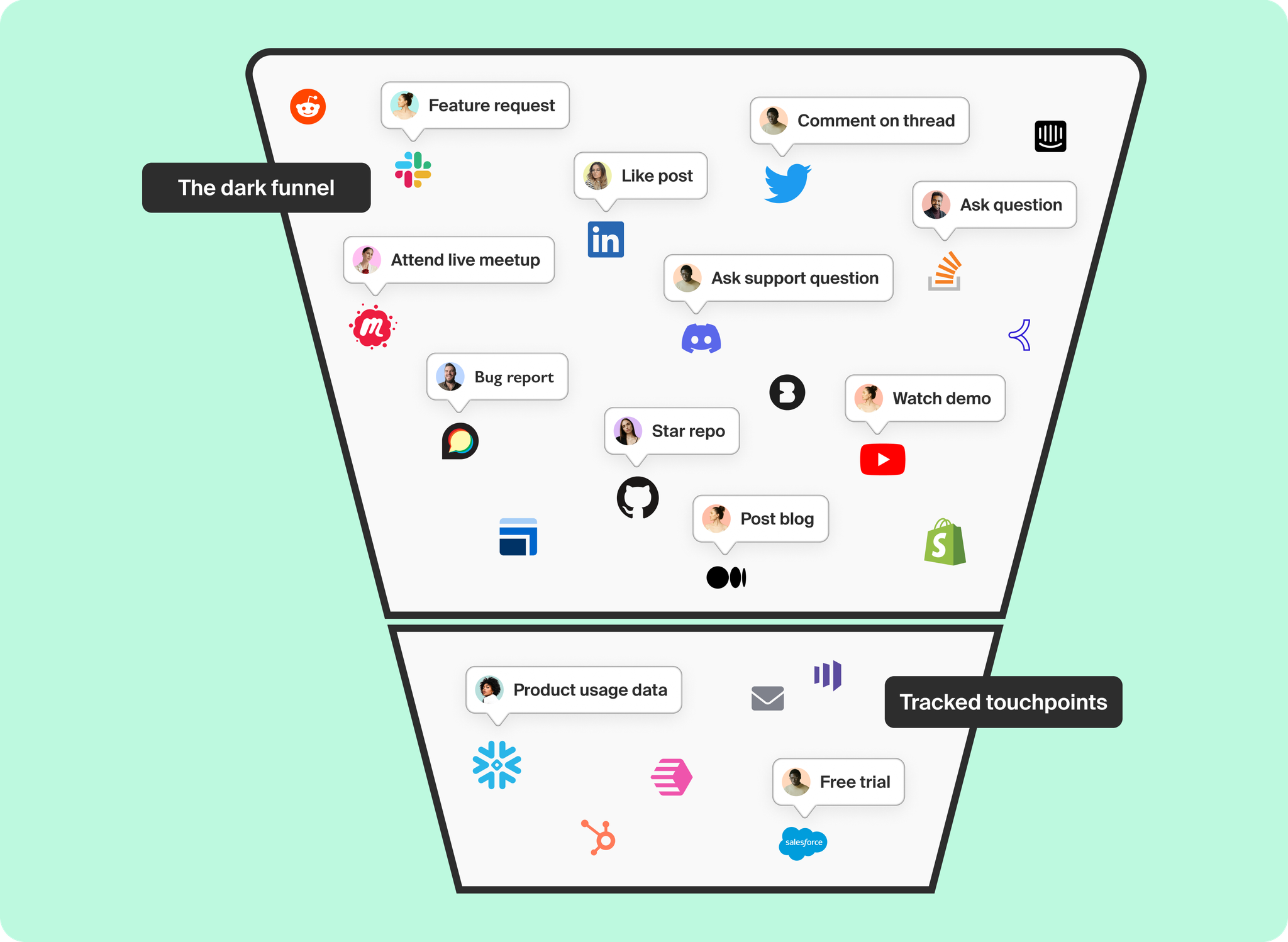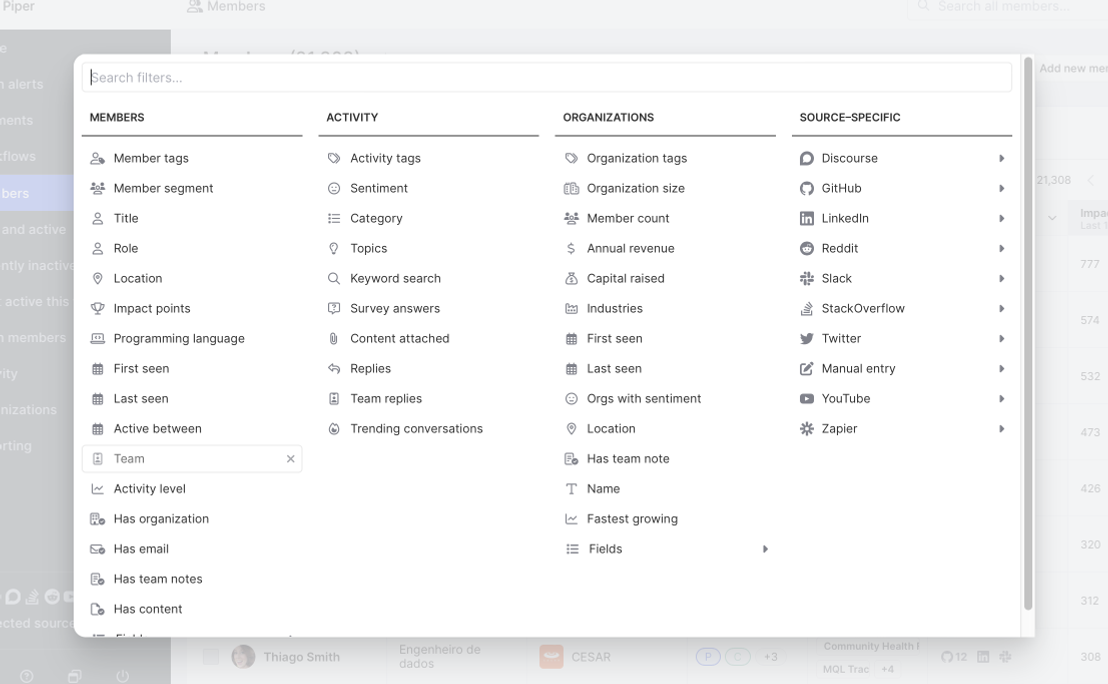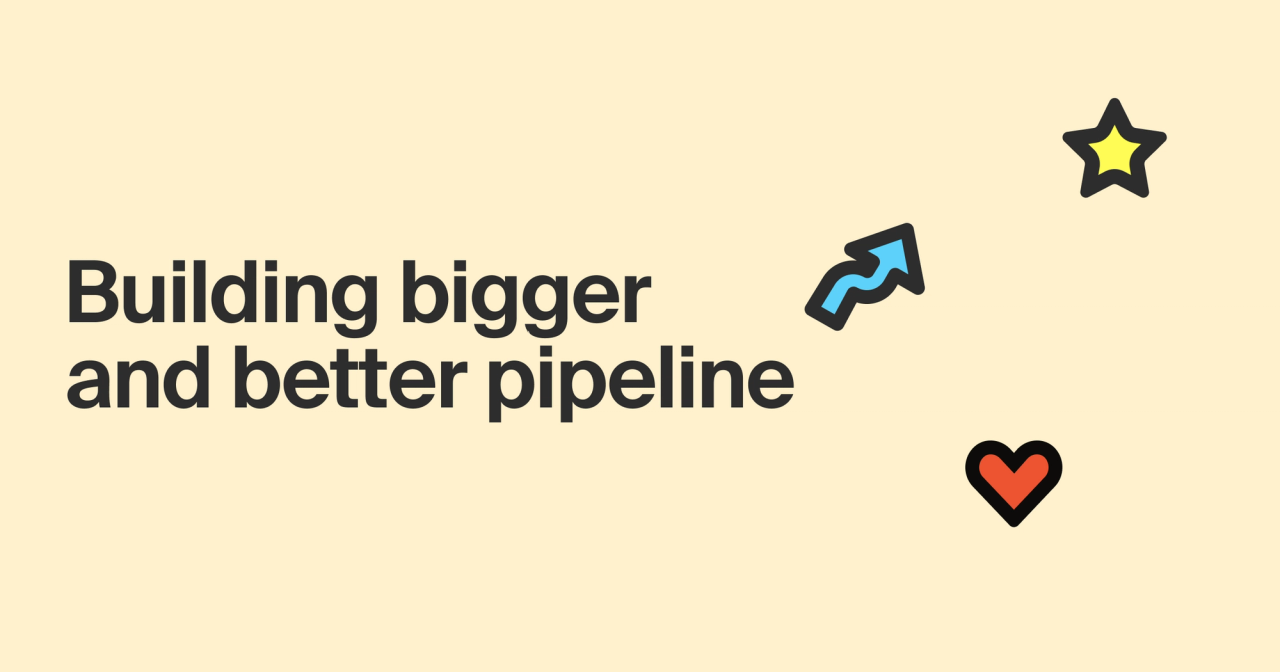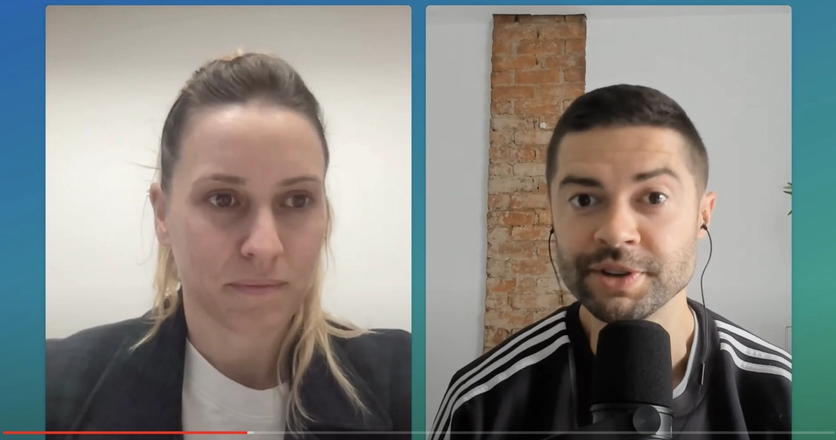Building healthy sales pipeline isn’t rocket science—it’s just damn hard to do in the dark.
It’s supposed to work like this: Your marketing team stirs up demand and serves up high-quality hand-raisers, your sales team turns that interest into deals, and it all happens in a matter of weeks—not months.
But if go-to-market teams are blind to buyer intent and context, pipeline growth and velocity grind to a halt.
It all comes down to data—garbage in equals garbage out.
Learn how modern GTM teams:
- Overcome poor lead quality and sluggish sales cycles
- Connect buyer identities to their behaviors
- Create more qualified leads and close more deals—fast
Not all pipeline is created equal
It’s easy enough to put points on the board using vanity metrics. All you have to do is gate a piece of content and call every download an MQL.
But if you ask your average SDR how many of those MQLs become SQLs, you’re going to be disappointed (and probably hear some salty language to boot).
It’s a similar story on the outbound front. Even if your BDRs hit their monthly quotas, too many opportunities die on the vine or run out the clock (quarterly SPIF, we hardly knew ye).
Generating a high volume of high-quality leads is hard. And here’s why: GTM teams are pulling from an outdated playbook.
Your sales team now only has 5% of a buyer’s time. The other 95%? It’s spent in the dark funnel.

Modern buyers have conversations and take actions across a massive ecosystem of digital touchpoints that you can’t see or attribute. These online communities are where your prospects ask questions, source solutions, and make purchase decisions relevant to you. It’s a goldmine of actionable insights and it’s often completely hidden from view.
So marketing keeps delivering leads that don’t convert. Sales keeps wasting time on tire kickers. And the prospects who are primed to buy slip through your fingers.
Now for some good news: You don’t have to stay stuck on the same old hamster wheel—you just need the right tools for the job.
Your buyers are waiting to be found
The way your customers buy—where they go to educate themselves, how they conduct research, when they decide to engage your company—has evolved. But that doesn’t mean your martech and salestech has.
As marketing- and sales-led growth gave way to product-led growth (PLG), traditional CRM data was joined by product analytics (never mind that many GTM teams at PLG companies still don’t have access to product data). But these are only two pieces of the puzzle—and existing solutions aren’t built to tap into the third: community data.
All those signals at the top of the funnel—the Reddit questions, the GitHub pull requests, the LinkedIn threads, and many more—are spread across different platforms, invisible and disconnected from bottom-of-funnel activity.
Your CRM may be your source of customer truth, but it’s not synced with activity in the dark funnel. Ditto for the tools you use to track product usage. And while account-based marketing tools can help you surface broad buying signals from target accounts, they don’t tell you who’s taking which actions.
Even if you had the time to manually comb through every data silo in your tech stack and compile customer intelligence (and who doesn’t love sifting through a data firehose?), it’s nearly impossible to resolve identities, prioritize next steps, or take action at scale.
Companies either don’t have the data they need, are unable to integrate it with existing data, or simply can’t leverage it. Or, more likely, all three.
To generate more high-quality leads, close more deals, and achieve faster sales cycles, you have to surface real buyer intent and engage buyers with context:
| Track the entire customer journey | Spot the signal from the noise | Take action and automate |
|---|---|---|
Connect all your critical customer touchpoints in a single place. | Identify and prioritize the people behind the buying behaviors. | Simplify and scale how teams get alerted to and respond to opportunities. |
Our research revealed that:
- 27% of opportunities originate in communities before being seen in CRMs.
- Community-first deals account for 20% of annual recurring revenue.
- 72% of community-led deals close within 90 days compared to only 42% of marketing- and sales-led deals.
And these aren’t just run-of-the-mill accounts—they’re your ARR and LTV superstars. Companies that engage with a community adopt three times as many features as those that don’t.
But without visibility into this dark-funnel activity, pipeline stays buried.
Build bigger and better pipeline using Common Room
Common Room helps you identify meaningful purchase intent in real time and from real people in the dark funnel. That way GTM teams can:
- Create community-qualified leads that have a higher likelihood of conversion.
- Move leads into marketing automation platforms or CRMs for sales teams to follow up.
- Zero in on the individuals behind accounts and reach out with context based on where they are in the customer journey.
- Filter and segment prospects by ICP and key persona.
- Prioritize outreach on native channels to meet customers where they are.
The end result? More high-quality leads, more meetings booked, and faster deals closed.
Here’s how modern GTM teams get it done:
Connect the dots on the customer journey
You start by pulling in data from across community channels and combining it with your existing customer and product data in Common Room. This gives you a unified view of the customer journey.
Common Room enriches customer profiles and resolves identities so you can see exactly who’s engaging in your dark funnel. This provides you with granular insights about prospects—intent, fit, and more—and lets you track stage progression and performance from end to end.

🎤 “Common Room immediately gave us those points of proof—we knew how many members were in our community, what organizations were using Temporal, and how they were engaging."
—Ryland Goldstein, Head of Product at Temporal
Separate the best from the rest
Next you can use filters in Common Room to zero in on the best opportunities.
Once you’ve prioritized which prospects to go after, you can use segments to create targeted prospecting lists based on your key criteria.
This helps you manage, organize, and engage different customer cohorts—with the proper context and at scale.

🎤 “Not only does Common Room help us save time by getting to the most important conversations faster, it has become core to how we prioritize which organizations we spend our time with."
—Tim Hughes, Vice President of Sales at Temporal
Put your pipeline to work
Finally, you can set up workflows to automatically add prospects to (or remove them from) different segments and stay alerted to key buying behaviors.
This helps you engage the right people, at the right time, and in the right place.

🎤 "If I thought I was excited about Common Room, when the sales team first started using it, they were like: 'This is the best friend we've ever had.'"
—Ryland Goldstein, Head of Product at Temporal
This strategy has helped Common Room customers not only source more deals, but also close deals 20% faster.
🎤 “Common Room helps us to effectively connect with users and stay informed about their experiences across digital channels. By discovering new users and prospects to connect with, identifying their challenges, and tracking sentiment, we can proactively engage in conversations that deliver value for our users, increase Pulumi usage, and generate pipeline—a win-win for us and the community."
—Tyler Hayden, Director of Sales Development at Pulumi
Healthier sales pipeline isn’t out of reach—it’s just hidden. Modern GTM teams use Common Room to find it and take action on it.
Fuel your pipeline growth and velocity with Common Room
Ready to see how Common Room helps you accelerate pipeline growth and speed up time to close?


